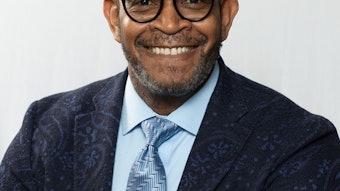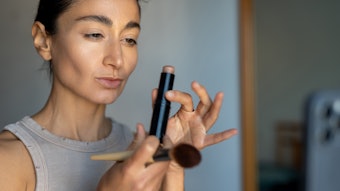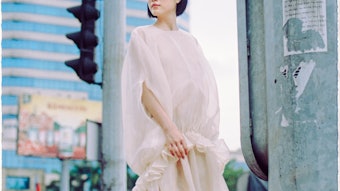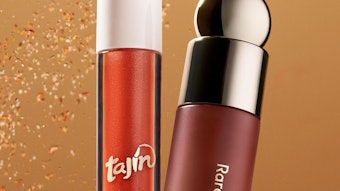When it comes to setting the mood and attitude of a season, color is essential. Creating the right color palette is more important to a product’s success than ever before. As consumers become more trend-conscious, they naturally want the products they buy to be colored in the latest fashion shades.
Whether you use the forecasts provided by color experts or work together with consultants to develop your own, color forecasts provide reliable, forward-thinking gauge of seasonal color direction.
Color Inspiration
In looking for upcoming trends, it is best to look at every design industry where color is key. “These days, color trend forecasters are taking a broader approach to their research, taking into consideration social, cultural and economic drivers in the world and making observations about how these factor affect consumer buying behavior,” says Heather Bochnovich, marketing manager, Presperse Corp. Fashion runways are just one source of inspiration for today’s beauty market. Color insight comes from many other sources—including interior design and fashion. BASF’s color portfolio, for example, compiles its forecast from several industries, including coatings and plastics. “We look across these industries and collaborate cross functionally to help uncover what the next trends are,” says Gabe Uzunian, manager R&D, BASF.
As strange as it might seem, even industrial design is very important. “The automotive industry is an area where finish as well as color is all-important,” explains Leatrice Eiseman, executive director, Pantone Color Institute. “They look far beyond just the next six months. It is the concept cars that are most meaningful, as they show what is on the drawing board.” Interior design, as noted, and home furnishings are good to look at as they indicate current leading lifestyle preferences that can inspire color palettes that could also be used for the beauty category. “There are closer ties between fashion, beauty and interiors than ever before, and consumers are most apt to shop within a certain comfort level—a certain style level and the colors that best express them,” says Eiseman. “While rigid color rules have been replaced by more creative guidelines, style and color coordination in the home remains a consistent goal.”
Texture and Finish
Color choices affect emotion and vice versa, yet color trend development has moved beyond color alone. It is also important to look at any product development that employs the latest technologies, as they are often cutting edge in coming up with color directions. “That would include the newer textile and fabric finishes and colors that would indicate, for example, whether matte or surfaces with a sheen are the most important, or if they are equally important,” Eiseman explains. This information can spread into other design areas, cosmetics included.
“Today, there is more of a focus than ever on texture and finish” says Presperse’s Bochnovich. Matte vs vinyl, powder vs gel—the final choice affects both the visual aspects of the finished product as well as the application experience. “Cosmetic brands need to meet the desires of consumers in terms of sensory application,” says Bochnovich. This is where ingredient suppliers can especially help brands to differentiate themselves in the market. For example, Bochnovich suggests a simple violet eye shadow can be transformed in texture or visual effect by adding different powder fillers to vary the aesthetic or effect pigments to add sparkle or shimmer. “Adaptative textures and colors are emerging for customized benefits,” adds Valerie Pian-Parison, BASF marketing manager, Color Care, Europe.
Effect pigments are formed by combining a variety of substrates and coatings. “By manipulating the type of substrate, the type of coating, the particle size of the substrate, we can continue to be innovative,” says BASF’s Uzunian. “Since appearance and color are influenced by these parameters, we can continue to innovate by changing one or more of these components to create novel effects that appeal to the consumer.”
Be on the lookout for customized products designed for specific eye colors, and packaging twists drive the formula to new rituals as cushion foundation or lip/skin ink, according to Pian-Parison. Multi-purpose products that can appeal to all of the senses is where it’s at. “Products such as self-sharpening eyeliner pencils and applique eyeliners with various shades and textures make application easy and the results runway-worthy,” adds Josef Koester, director, Home Care, Personal Care & Sustainability Marketing, North America, BASF.
“Consumers ultimately inspire our innovation,” says Uzunian. That being says, BASF partners with customers to identify unmet market needs and couple this with its own technical expertise to develop pigments. The most recent launches from BASF include Timica Terra Colors which evolved from the consumer trend for mineral makeup. “Our product is derived from natural mica, and provides benefits such as a translucent skin tone and downy after-feel without the look of heavy makeup,” explains Uzunian.
R&D teams leveraging the trifecta of unmet customer needs, internal technology innovation/advances and market trends forecasting will drive innovation. “By collaborating with marketing, sales and technology, we are able to bring these key pieces together,” says Uzunian.
Supplier Forecasts
Brands also can work with the suppliers who have developed their own authentic trend forecasts, compiled from industry expert sources and observations from customers and consumers.
EMD Chemicals has published a series of trend categories and colors for the upcoming seasons. For spring/summer 2015, EMD Chemicals forecasts delicately colored natural skin tones; green-tinged neutral shades; watery blues inspired by calm aquatic colors; intense, energetic and flamboyant reds to electrify the neutrals; tangy pastels tinted with upbeat 1990s-inspired accents; and elegant bright tones of violets with a couture edge.
One of four themes is “Aesthete,” for those whose effortless fashions are simple and chic, sophisticated yet relaxed. This collection exudes serenity and balance, featuring nude shades highlighted with deep color. Makeup focuses on ultra-discreet effects: satiny complexion, slightly iridescent beige eye shadows, volumizer mascaras, and barely tinged lips and nails. In an athletic and chic vein, cosmetics also will feature navy blue and deep red in dense textures and sharp graphic patterns.
Phil Linz, applications analysts at EMD Chemicals, suggests the base formulation for lipstick S15-13: Dark Treasure, with Merck KGaA’s recent launch Colorona SynCranberry as well as Ronastar Gold added for a darker, bluer tone that suits the theme’s cool maritime vibe. It uses the same dispersions as Coral Reef, a truer red, which can be layered on top for an interesting two-tone effect. Variations on this shade also could include the use of other reds darkened with black or silver pigments or yellowed with gold-toned pigments.
Among its fall/winter 2016 forecasts, EMD Chemicals offers “Main Street,” a high-energy beauty mood that indulges in bold, multicolored graphics, particularly on the eyes and nails. Lips are either richly pigmented or nude and glossy. The modernist feel has a striking 1980s street art vibe, and in eyeliners, vivid color draws attention to the eyes. Composed of typical urban hues, color ranges combine denim blue with casual khaki. Bright accents add graphic power with yellow and red. Green brings a touch of nature. Black and ebony inject a strong attitude, while a mint green refreshes the pallet.
For a unique cosmetic product, EMD utilizes two new Rona synthetic micas, Timiron SynBeam Blue and Colorona SynBerry Pink, in a temporary hair colorant essentially formulated as a pressed powder. The colors were chosen to give S15-24 Pink! Hair Chalk a rich pink shade, very much on the blue side. A wide range of pigment shades may be used with this type of product—from earth tones to highly sparkling pigments or other interference pigments—to give hair an arty and edgy look.
The Forecasting Agencies
As the most widely recognized color authority, Pantone contributes to and/or creates forecasts that are indicators of future color/design expectations and are used by diverse industries. Pantone, an X-Rite company, and the Pantone Color Institute provide a range of trend forecast publications, color research and customized consultancy to help companies make informed decisions about color for their brands or products in order to gain a competitive edge. According to Pantone, cooler and softer color choices take the main stage in Spring/Summer 2015 with subtle warm tones to follow a minimalistic en plein air theme, taking a cue from nature. “Soft, cool hues blend with subtle warm tones to create a soothing escape from the everyday hustle and bustle,” says Eiseman.
The lead color for women for spring/summer 2015, Aquamarine is a cool, airy blue with a dreamy feel, while Classic Blue is strong and reliable, serving as an anchor to the palette. Marsala (which Pantone named its 2015 color of the year) is a robust red that incorporates warmth and richness while remaining grounded in its red-brown roots for a sophisticated, natural earthiness.
Heading into next fall/winter 2015, softer colors gradually build to more intense shades, finishing with strong bursts of color. “With global fashion trends becoming less constrained by rigid color rules and our feelings about the future more optimistic, consumers are delighting in color expression and continuing to seek out color year round,” writes Pantone in its “The Pantone View Colour Planner Fall/Winter 2015/2016” report. Pastels will take on a technical look, and browns are juxtaposed with bright, often synthetic or clashing hues, which lift and transform these traditional looking colors into something more modern. Blues will move to the background, being used more so to tint greens, purples and, especially, blacks. Red-infused purples and imbued blacks will continue to grow as well.
Cosmetics and color have always been very closely intertwined. “Trends are important, as they supply the necessary ‘wow’ in ads and at point of purchase,” says Eiseman. However, it is important in developing new color products to know your consumer and their lifestyle and not to rely solely on trends.
London-based fashion trend forecasting agency Trendstop helps brands discover how cosmetic color, applications and packaging will be evolving over the next three seasons and provides recommendations for consumer product application, including which shades are ideal for your applications and how to successfully combine seasonal shades for maximum impact. To find which influential shades are entering and exiting the marketplace each season, Trendstop’s 150 global trend spotters/color experts collect information from fabric mills, color symposiums, tradeshows, runway collections and the work of conceptual artists and designers to create a complete trend color overview. The resulting reports make it easy to follow the trend color lifecycle and translate to your target customer.
Two colors highlighted for spring/summer 2015 by Trendstop are Blueberry Milk and Banana Essence, a creamy pastel that is also forecast to continue to be one of spring/summer 2016’s key fashion colors.
Innovation and trends consulting agencies also can demonstrate how trends relate to consumers’ evolving attitudes and desires. PeclersParis deciphers and analyzes global macro socio-cultural trends each season, identifying key trends that will specifically impact the beauty market.
Peclers methodology combines in-depth sociocultural trend analysis with inspirational insights provided by its creative experts. Year round, Peclers collects data revealing the never-ending evolution of the beauty industry—drawing references from sociology, philosophy, business, culture, fashion, contemporary art, news, media and so on. “Our team of experts deciphers and analyzes these emerging signs, classifying them into strategic directions—key trends,” explains Jeanine Milillo, managing director, Peclars Paris. “These key trends are then cross-fertilized with creative input and brought to life via colors, ingredients, materials, fragrances and exclusive visuals.”
Peclers’ expertise enables companies to understand the dynamics of a market and select the most pertinent trends, allowing brands to make an emotional connection with their consumers.
Peclers is focusing on several themes for 2015/2016, including “Sacred Nature,” with millenary ingredients, myths and mythologies, metamorphosis; “Singularity,” a new wave of individual expression to stand out of the crowd and be unique via body performance, self-staging, disrupting the norms, expressionism but also new trans-cultural ethnical inspirations blending East and West or North and South to generate new aesthetics; and “Normcare.” “Following the fashion phenomenon of Normcore, the beauty market needs to reach the aspiration for more simple, essential, natural products and rituals revealing inner beauty,” explains Milillo. “This induces more care rituals to enhance skin radiance and detox and to achieve a natural look, such as the ‘no makeup makeup’ or hair un-dos trend, for example.”
Also, Peclers is forecasting “Floral,” blooming nature with blues, pinks and voluptuous purples; Summer Sunshine, bright or dark oranges, soft yellows and intense pigments; Precious Minerals, metallic and stones such as jade; and Refreshing aquatic greens and turquoise or azure blue for the city or seaside.
Whatever the color of the season, on-trend color, as Trendstop notes, is directly linked to consumer moods and aspirations, so getting shades just right can mean a big increase in sales.
Sara Mason is a freelance write based in the Chicagoland area. She was previously managing editor of GCI magazine.



![According to the Personal Care Products Council, 'Between 1990 and 2022, the [U.S.] personal care products industry generated a trade surplus every year, reaching $2.6 billion in 2022...'](https://img.gcimagazine.com/mindful/allured/workspaces/default/uploads/2025/08/adobestock-353393403.MryFiCWzOJ.jpg?auto=format%2Ccompress&fit=crop&h=191&q=70&w=340)






